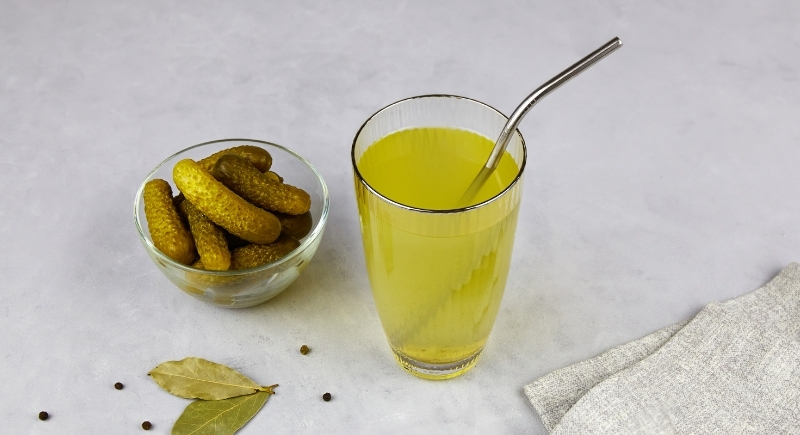The Real Reason Why Tennis Players Drink Pickle Juice
Tennis fans are getting used to seeing players reach for pickle juice during tense moments of a match. Carlos Alcaraz, Jannik Sinner, and even Dylan Alcott have all reached for it during some of their biggest matches. It might seem like a quirky choice, but there’s solid science behind why it keeps showing up courtside.
Why Pickle Juice Works So Fast

Image via Getty Images/Viktoriya Telminova
Muscle cramps are one of the most frustrating issues an athlete can face during a long match, especially when the body is pushed through hours of explosive movements, quick sprints, and repeated muscle contractions. The acidic vinegar in the pickle juice brine stimulates nerve receptors in the back of the throat, triggering a signal that travels along the spinal cord and disrupts the cramp cycle.
The signal takes effect almost immediately, even before the juice reaches the stomach, which is why athletes say it can stop a cramp about 40% faster than water. When a match stretches deep into a fifth set, every second matters, and any tool that brings quick relief instantly becomes a favorite.
Alcaraz once discussed cramping across his entire body during a major match, so when he later used pickle juice on court, people finally understood that it was a targeted solution for a problem that can derail even the best players.
How Players Actually Take It
There’s a popular misconception that players need to chug large amounts, but sports doctors say the amount required for the reflex to work is surprisingly small. A sip about the size of a tablespoon can be enough as long as it hits the back of the throat. Some athletes don’t swallow it at all. They swish it around their mouth for twenty to thirty seconds and spit it out because the reflex happens in the mouth, not the stomach. Anyone who immediately rinses with water ruins the effect because washing away that sharp, acidic flavor stops the nerve reaction that interrupts the cramp.
Why They Don’t Just Eat Pickles Instead

Image via Canva/Syda Productions
It might seem like eating a few pickles would do the trick, but it doesn’t work the same way. The juice delivers a concentrated mix of sodium, potassium, and acid in a quick dose that activates the nerve reflex. Whole pickles don’t create that same concentrated splash, and eating several during a match would be uncomfortable and impractical.
There are two types of pickle brine. Fermented brine contains probiotics, whereas vinegar brine does not; however, for cramp relief, the vinegar-based version is the one athletes typically rely on. While probiotics can support gut health, nutrition experts often suggest obtaining them from yogurt or kefir, as pickle juice contains a high sodium load.
The Real Risks Athletes Consider
Pickle juice is high in sodium, but a small, occasional dose used for cramp relief is unlikely to cause a meaningful rise in blood pressure in healthy individuals. Individuals sensitive to sodium or those managing hypertension may still want to exercise caution.
A few athletes have even thrown up after using it during a game, which is why nutritionists encourage players to practice using it during training. Like anything in sports, you test it early so you don’t deal with surprises later.